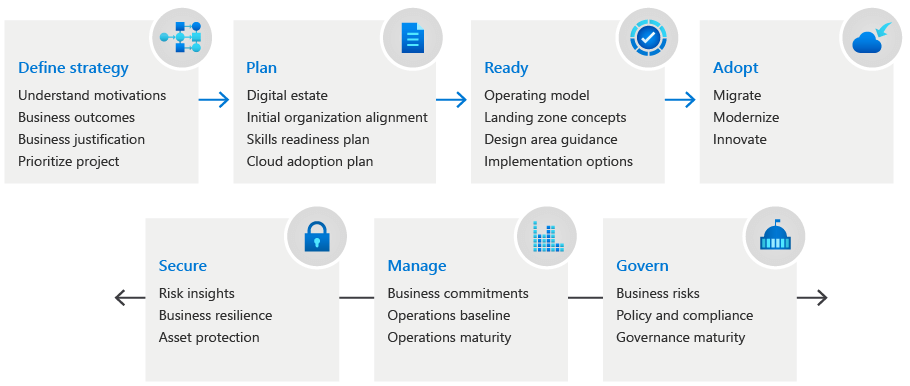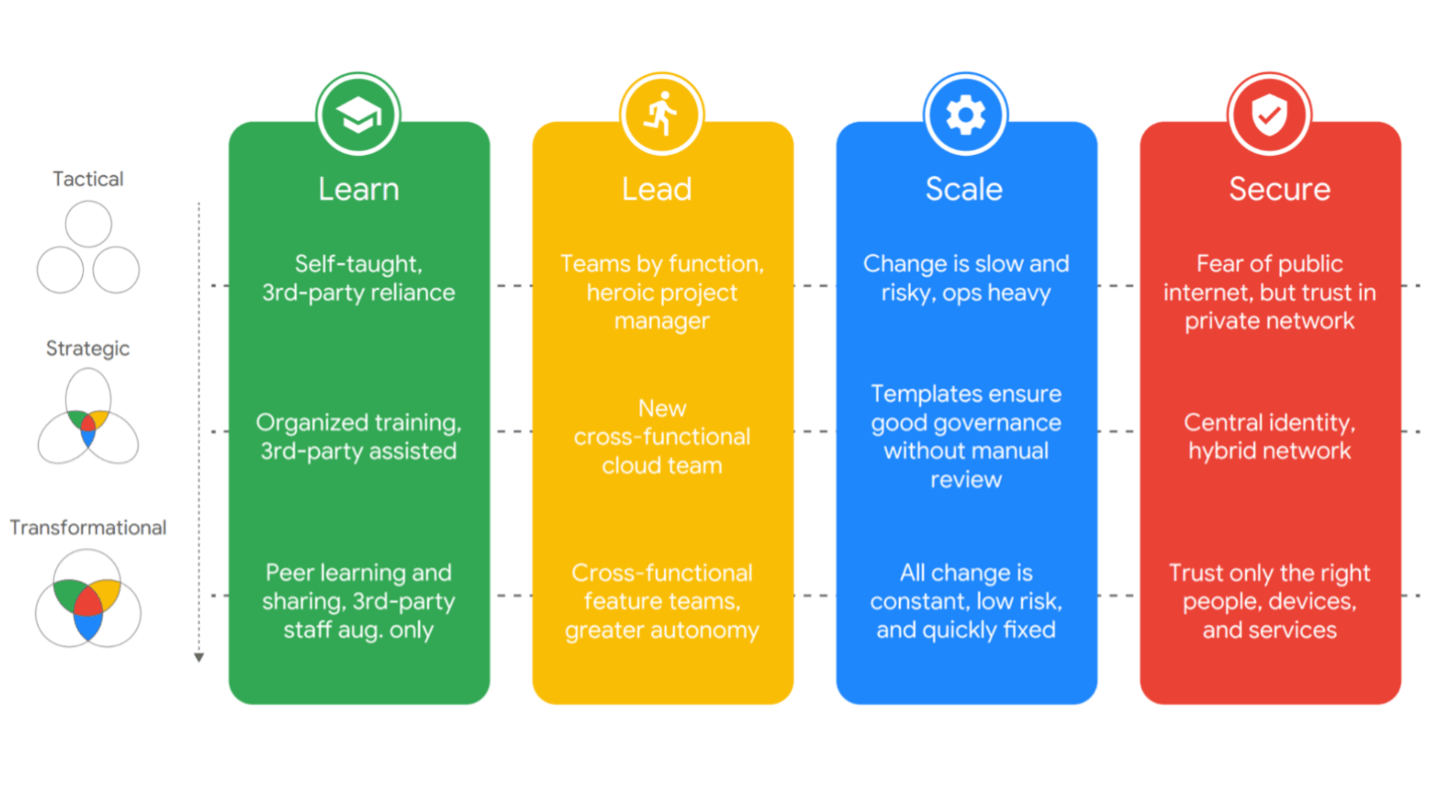Cloud adoption from a project management perspective
Consider what the cloud is, how companies use it, and the different types of cloud models and services available. This article highlights the critical aspects of managing cloud-based projects, such as choosing a provider, understanding the nature of the project, managing costs and stakeholders, and monitoring the end-to-end delivery.
The author of this article is EPAM Project Manager Carol Torres.

Introduction to Cloud
“Cloud” has become one of the most frequently used words these days. Everything is on the cloud, and we have handy access to it through our mobile devices and applications such as Microsoft 365, Netflix, or even simply accessing a web page. How is that possible? Because the companies who provide these services are all using Cloud capabilities in one way or another.
So, what is the cloud? There are many different definitions. Personally, I like the one used by Microsoft which states that "The cloud is a metaphor for a global computing network of remote servers that run applications, store data, and deliver content and services", commonly associated with the internet.
Cloud adoption is a strategy for companies to start, or continue, their digital transformation journey. Successfully using the cloud enables them to bring new capabilities to market more quickly, innovate more easily, and scale more efficiently. It also allows them to decrease their costs and shift the ownership and responsibility for IT infrastructure (servers, virtual machines, storage, networking) to the cloud service provider (CSP).
Cloud and Project Management
As a Project Manager, you may have to handle Cloud–based projects. You need to understand the basics and create an overall strategy for the journey of planning, collaborating, monitoring, and delivering the cloud-based solution.
To do this effectively, there are some key areas where you need to focus, let's consider them now.
Cloud Service Provider
There are many cloud providers. The big three are Amazon (AWS), Google (Google Cloud), and Microsoft (Azure). You need to know if there is just one CSP involved or if it is multi-cloud.
Every CSP wants to be "the chosen one” for a given project. A big advantage for everyone, but especially a PM, is that CSPs provide comprehensive and detailed documentation of every single service that they offer. Each CSP recommends a framework, or a set of steps, to help you with the planning, execution, and monitoring of your cloud adoption project:



Cloud basics
As a Project Manager, you need to understand what is used in your project:
- Type of cloud:
- Public: generally a CSP where you will be accessing the services through the internet.
- Private: a third party renting you their infrastructure; a dedicated connection.
- Hybrid: a combination of public and private.
- The cloud services model:
- Infrastructure as a service — IaaS: the cloud provides a common infrastructure to run software applications.
- Platform as a Service — PaaS — the cloud provides a common software/language (e.g. Java, Python, .Net, etc.). This service is generally used by developers to develop a product in the cloud environment.
- Software as a Service — SaaS — the cloud offers the capability to use its environment with a subscription.
- Nature of the project:
- Cloud strategy and advisory: the goal is to assess the existing state of the client´s portfolio and help them reshape their business.
- Migration and modernization: the goal is migration to the cloud and your role is to help the client understand cloud migration and how to leverage it to add business value.
- Cloud infrastructure: the goal is for the client to move from where they are into an intelligent infrastructure built for the pace of change to gain a competitive advantage.
- Cloud-native application development: the goal is for the client to fully unleash the power of the cloud and their enterprise data, and your role is to help adopt cloud-native architecture.
- Cloud business services: the goal is to design, build, automate, and operate the client’s cloud solutions.
Common project management tasks
With the above established, you can focus on building your project plan and performing what I consider the common tasks for any PM. These include: the management of scope, stakeholders, people, change, budget, risk, and procurement, and the monitoring of the end-to-end delivery. In my opinion, the items discussed below are the ones to focus on and monitor closely.
Cost / Budget
Cloud solutions can be cost-effective to set up, but may become very expensive once they are operational due to the common use of transactional cost models under the pay-as-you-go offerings of all CSPs. These operational costs must be accurately modeled, and clearly understood and communicated to stakeholders for approval.
Scope
As you can see in the different CSP framework diagrams, a cloud adoption transformation incorporates a number of different areas but you can start with one, or just a few, and begin maturing your solution from there. You may be dealing with a migration from on-premises to the cloud using the "lift and shift" model (take the source application into the cloud with no or minimal changes). In that case, the scope will be the migration itself with the apps up and running properly. Once they are in the cloud, the client may want to enhance or rebuild those applications, which will be a different scope, another timeline, and different requirements. As a PM, you play an essential role in managing the scope with the client and within the project.
People
The Project Management Institute calls this area "resource management," but I prefer "people management" instead. To find the right candidates, you need to specify the skill set required for each project member. Each cloud provider offers some services that require specific knowledge and expertise to implement them. Also, make sure the people you select are motivated, understand the business, and feel part of – and invested in – the solution that will be delivered.
Stakeholders
One crucial aspect of any cloud adoption is security. Some stakeholders are seriously lacking in confidence that effective security will be provided. Their hesitation is understandable. The organization´s data will be off-site and managed by a third party which, let´s face it, doesn´t sound great! The cloud security offering, however, is very significant for any CSP. Be ready to identify and create the stakeholder register with and clearly state who will be impacted or will have the greatest accountability in these areas: data security, Identity and access management, governance (policies, procedures), data retention, business continuity planning, and legal compliance. This does not mean that other stakeholders are not important, but believe me, you will be grateful for working with these individuals!
Conclusion
Managing a cloud-based project does not really require a set of skills that is different from those every PM should have. But since the cloud is the future, and many companies will take their business into the cloud, it is wise to be familiar with the latest developments impacting the technical and managerial aspects of your role as PM. By following the steps identified above, project managers will be better equipped to understand what makes a Cloud project unique and to take the necessary actions to ensure that their projects are set up for success.

.png)
